Rochester my home town is also the home of Kodak. It used to be that if you mention Kodak that people had fond feelings and were proud of Kodak. While today Kodak still exists and employs around 4000 people. It is nowhere near as large as it once was. At its height in 1988, Kodak employed 145,300 people worldwide. But how did Kodak get started? Over our summer home visit Tracy and I visited the George Eastman Museum to learn the answers to these questions and more. George Eastman, the founder, began producing dry photographic plates in 1880. Awhile after that, in 1888 the company offered a camera could shoot 100 pictures on a preinstalled film cartridge. The camera sold for 25 dollars. Once the 100 pictures were taken, the camera had to be sent back to Kodak for the pictures to be developed. Between 1963 and 1970 Kodak produced 50 million Instamatic cameras. For more Kodak background click here. My grandparents owned one of the Instamatic cameras. To me and many others Kodak is more than a camera.
It’s Rise and Decline
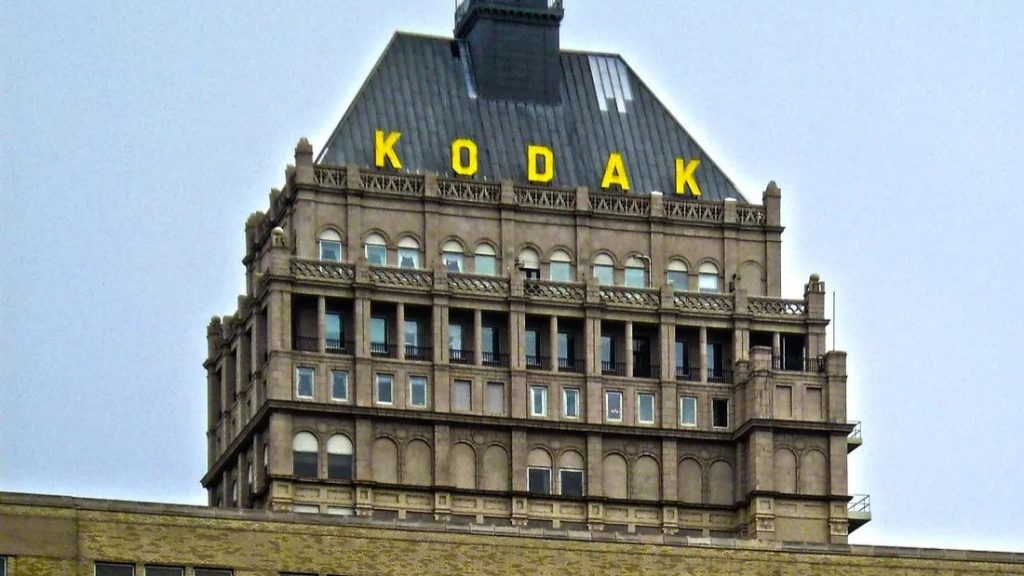
In 2003 Kodak shares were valued at 40 dollars, but in 2012 Kodak filed for bankruptcy. By 2015 their stock sank to .78 cents over fears of bankruptcy. What happened? It appears Kodak didn’t transition well from print film to digital. Most of their success was in the print film market. Growing up Kodak was a house hold name. People used to say a special moment was a “Kodak moment.” Kodak is more than a camera. It was also a culture. It was common to know of people who worked at Kodak. My uncle worked at Kodak. It became common to know of someone who was getting laid off by Kodak. Kodak let a lot of people go. Some divisions of them company just ended, but many of them were sold off to pay their debts. Kodak in those days was just trying to survive. One of my friends, Victor used to work for Kodak. His division produced film, equipment and software for dentistry. They were bought and he continued to do the same work only under different management. Today they are Carestream and Carestream has double the number of employees Kodak has.
The Life of George Eastman
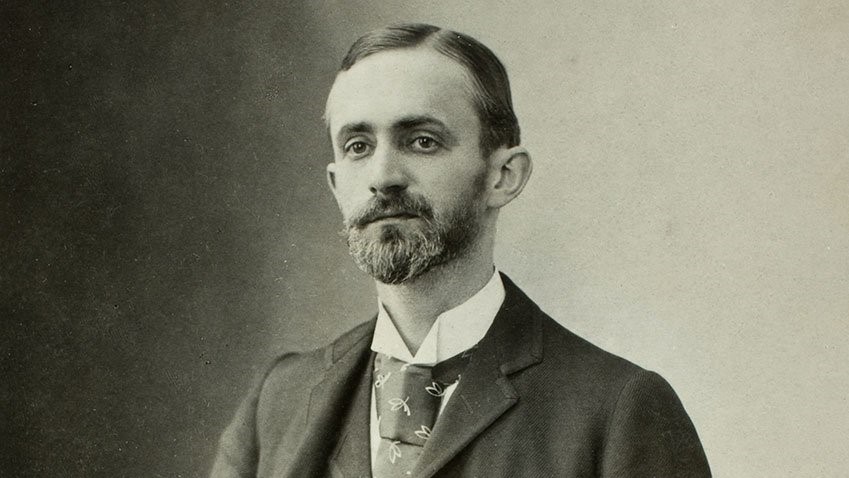
For many George was an almost larger than life figure that shaped much of the landscape of Rochester’s history. I’m sure he would be upset if he could see what has become of his company, but Mr. Eastman was a man of humble beginnings. At the age of 13 or 14 his father passed away. George decided to drop out of school in order to support his family. It’s remarkable that a high school drop out could accomplish as much as George accomplished. The George Eastman Museum is dedicated to preserving his memory. They opens at 10 am, but we got there at 10:25 and that was just in time for the 10:30 tour. Our tour group started out small but by the end we had more than 20 people. Our guide was very knowledgeable and passionate about the museum’s history. She told us details about Georges family, work and relationships. He never married. It’s been said that he didn’t marry because he was too busy with his work, but George did enjoy his relationships with women. In preparation for meeting with a group of women, he used to read about the latest fashions. Our guide credited him for his in genius understanding of marketing before marketing was marketing at least as we know it. He just understood things intuitively. To her and many others Kodak is more than a camera.
Video Tour
His Legacy
During the course of George’s life he revolutionized photography and made it available to the masses. He invested in philanthropy and gave away millions of dollars. Unfortunately, George had been dealing with chronic pain and decided to take his own life in 1932. Our guide didn’t talk about George’s suicide. She held him in high regard and that aspect of his life just didn’t seem to fit.
Early Camera Development
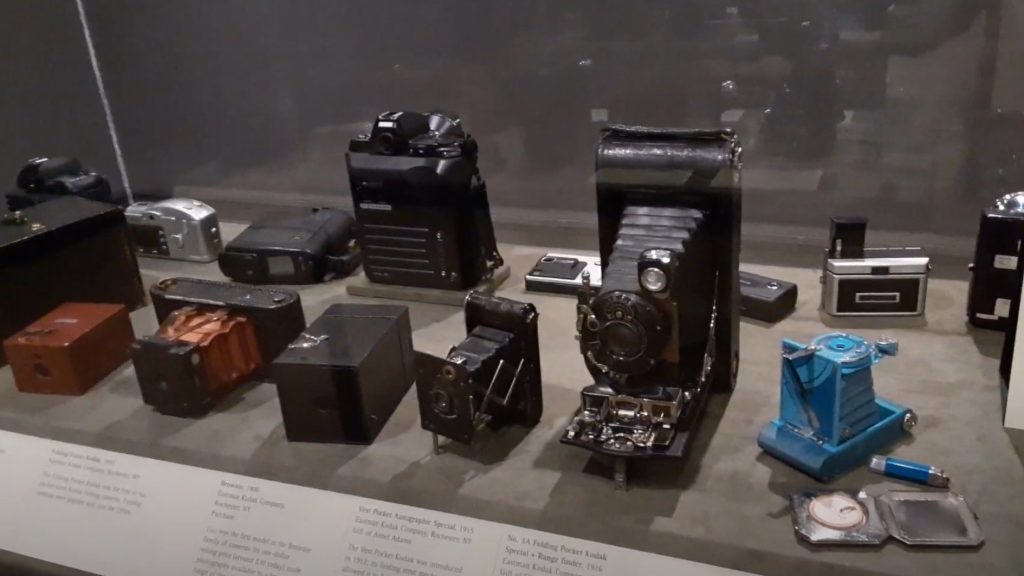
It’s amazing how one person’s life can have such an impact on so many people. After the tour was done we got to explore some gallerias. I knew that Kodak developed some camera’s but I didn’t really consider them as a chief innovator in the camera market. I also didn’t realize that they partnered with Nikon or Canon. One of the galleries was dedicated to cameras and equipment Kodak produced. Kodak is more than a camera. It is or at least it was a symbol of innovation and a commitment to excellence. For approximately 140 years Kodak added value and shaped part of photography’s landscape. I’m sure it must be difficult for a number of people to let go of Kodak’s position as an industry leader and accept them now as more of a historical contributor. Anyway regardless, if you get a chance the George Eastman Museum has the largest collection of photographic equipment of its kind. You should go.
Significant Camera Developments
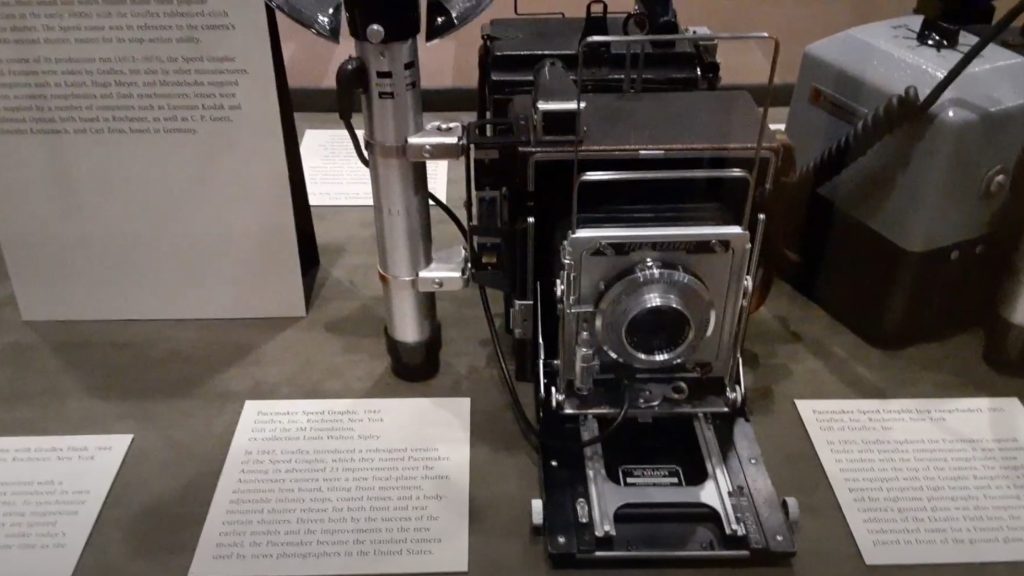
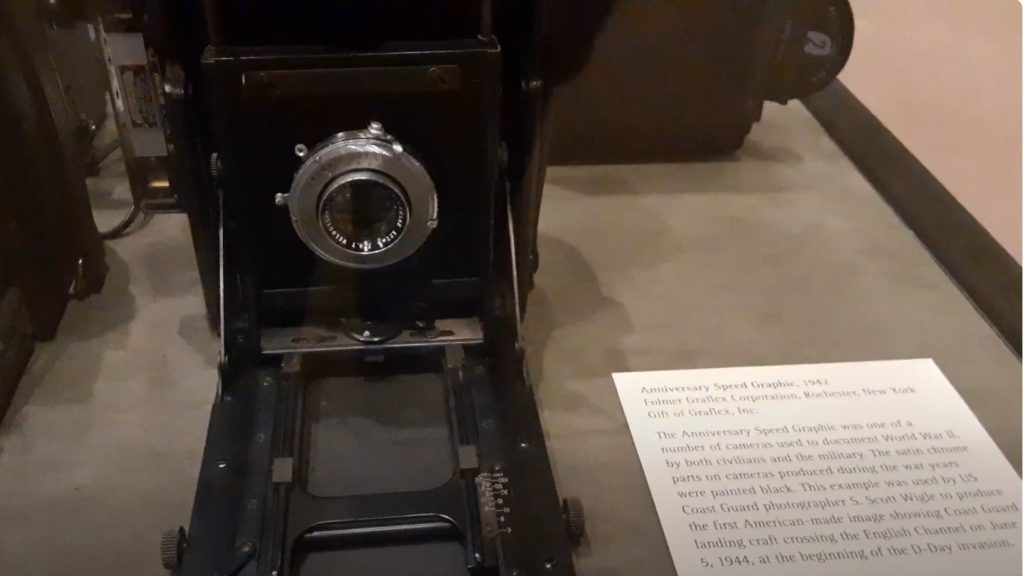
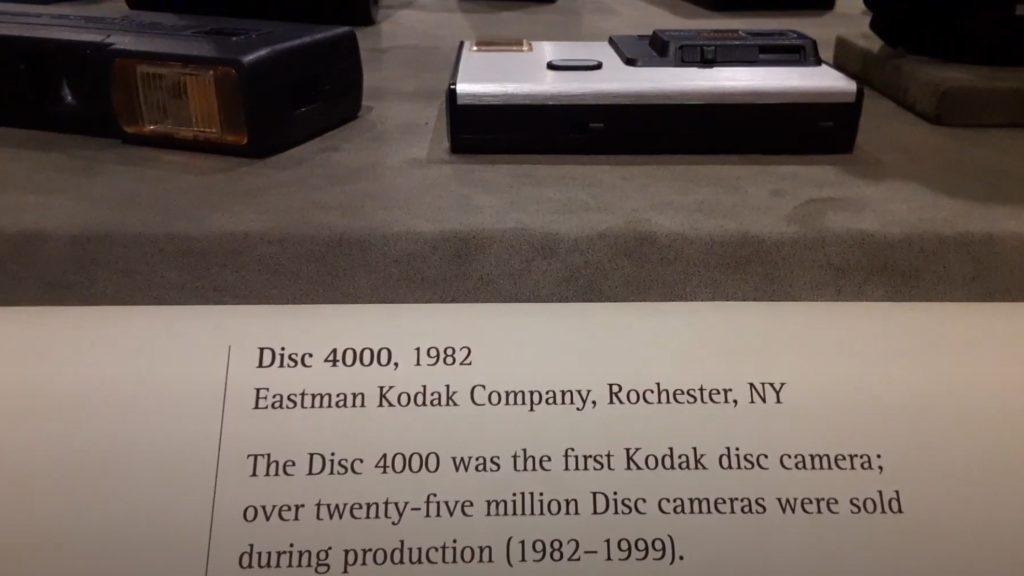
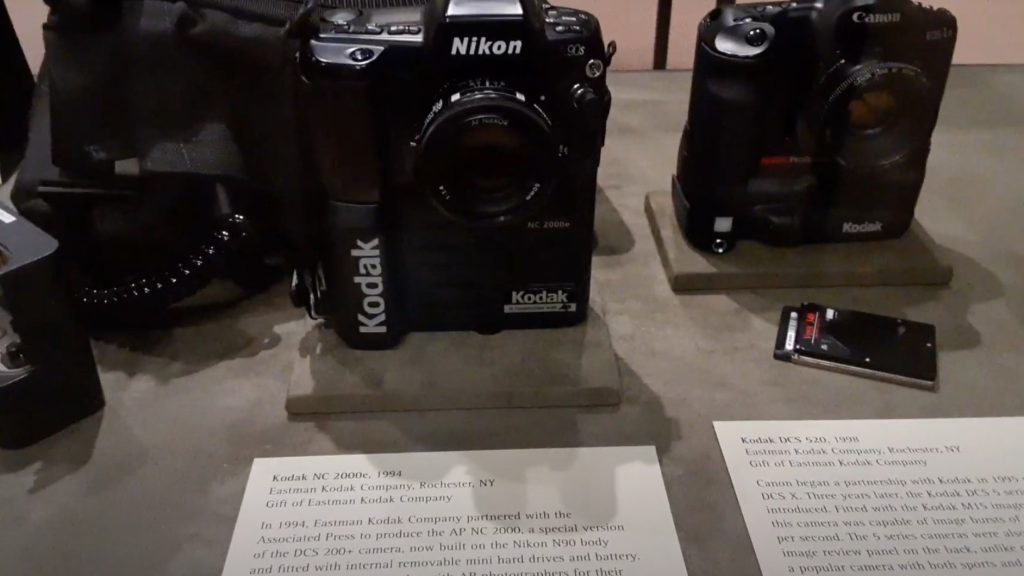
Each camera was cased in a glass exhibit and contained a description of why that particular model was significant. I appreciated the fact that the exhibit didn’t just contain Kodak cameras. It also included Nikon and Cannon and Kodak’s partnership with them. It must have been really hard for people who made their living working for Kodak or for those who invested in Kodak to have let go of the vision of Kodak as an industrial leader in film photography space to accept its present role as barely a contributor. Still we can be grateful for the historic role that Kodak has played. I’m super glad we made time for a tour of the George Eastman Museum.
A Few Notable Cameras
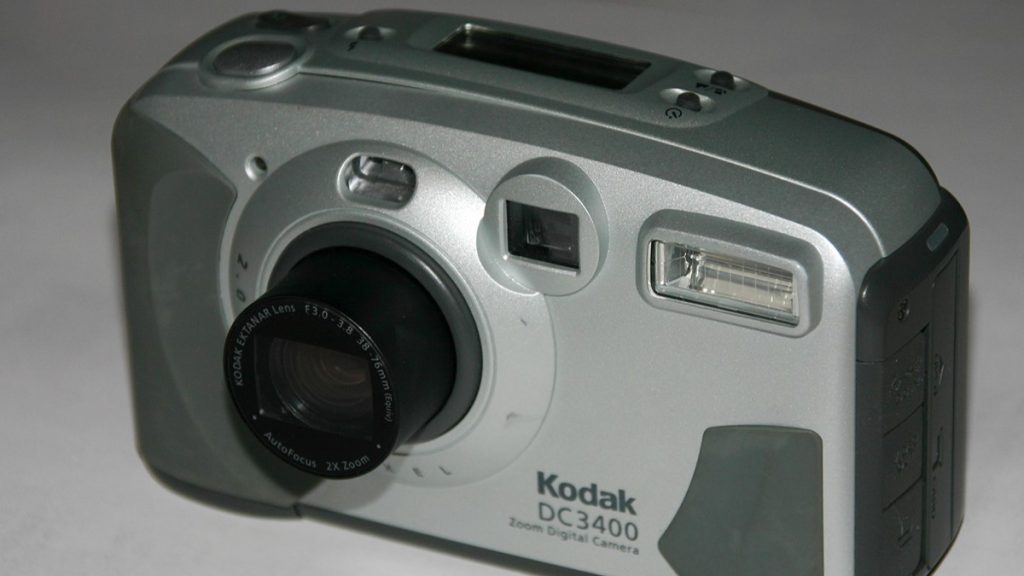
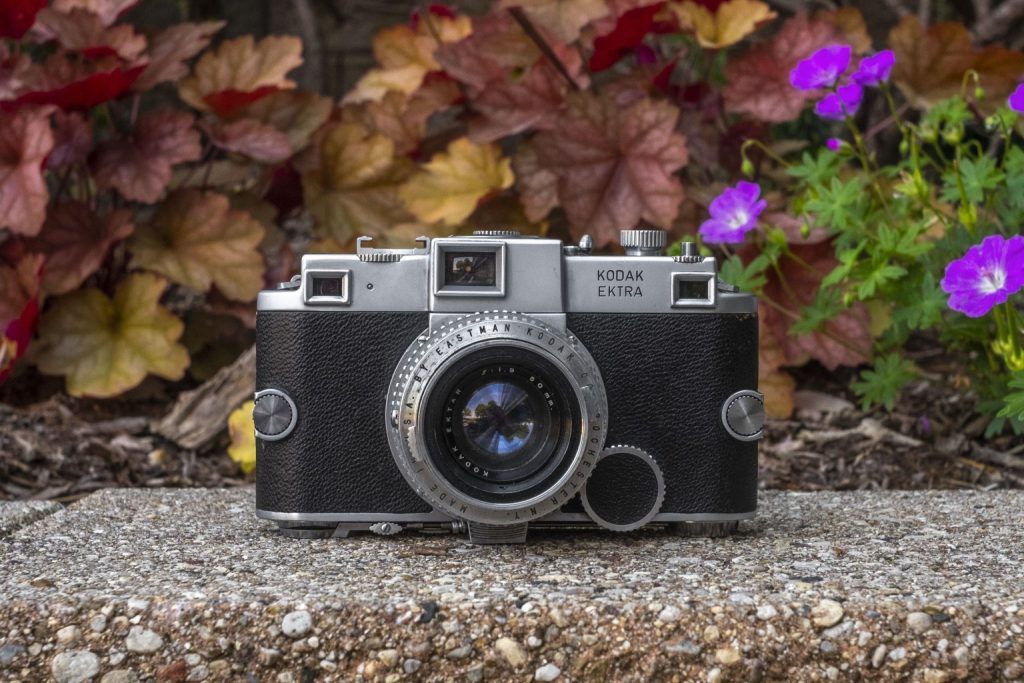
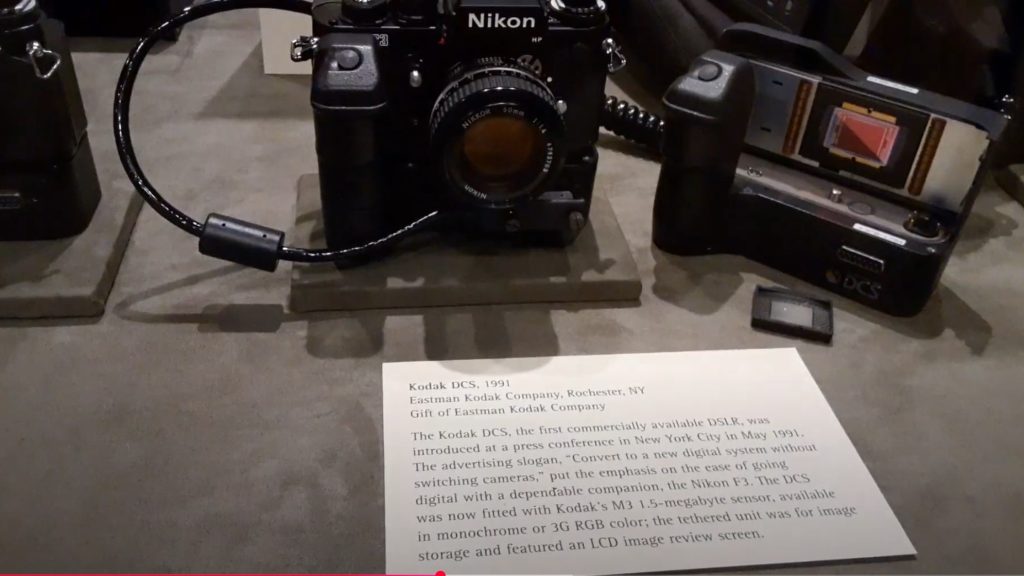
The Kodak DC3400 was manufactured 2000. My mom bought for my dad. She did her research pick out a good camera and my dad loved it. It was a point and shoot, and for 2 megapixels it was a good camera. The second camera is the EKTRA it was made in 1941 and is widely considered the best quality camera that Kodak ever made. Check out Mike’s article. Definitely a collectors item. The third camera the N90 with Kodak equipment to convert it into a digital camera. I have the N90 back in the US. But of course don’t have any of Kodaks equipment from making it a digital camera. It’s too bad that Kodaks vision for converting traditional SLR into DSLRs didn’t gain traction.

